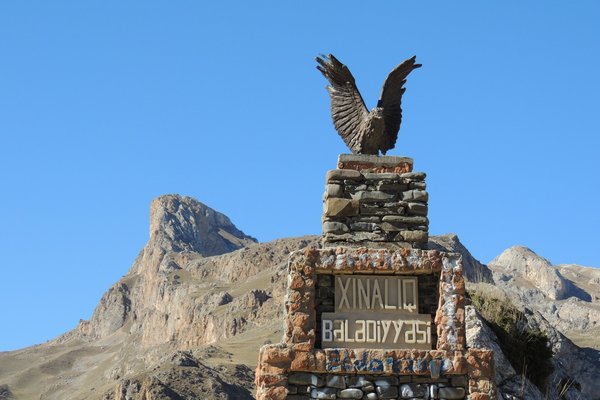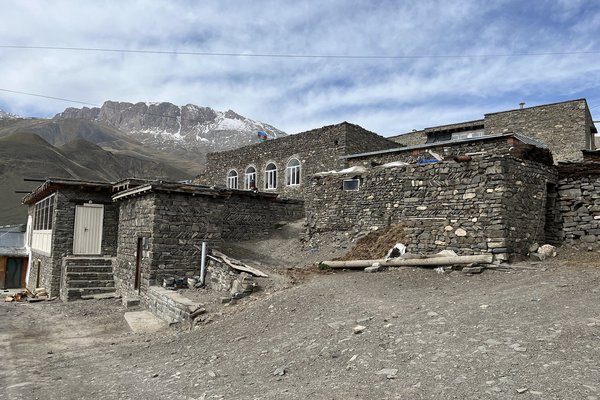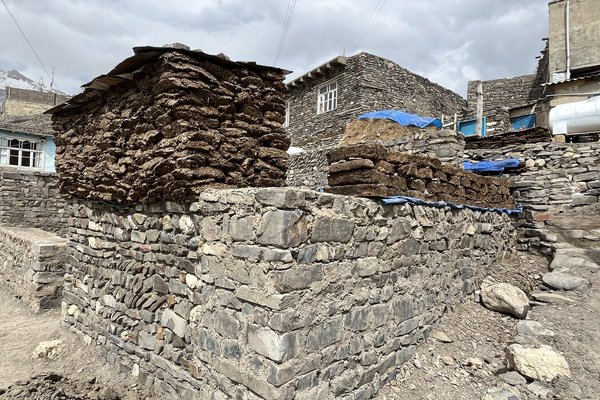Azerbaijan
Khinalig
The Cultural Landscape of Khinalig People and “Köç Yolu” Transhumance Route reflects the living tradition of long-distance transhumance of the Khinalig.
The semi-nomadic Khinalig people, a distinct ethnic group within the Caucasus with their own language, seasonally move their animals over 200km between the summer pastures in the mountains and the winter pastures in the lowlands. They live in the highest inhabited mountain village in Azerbaijan. Along the route, monuments such as shrines and bridges can be found that testify to its traditional use by these people.
Community Perspective: Tamas visited in 2022 and found that it "reflects rather 21st-century poverty than some kind of idealistic historical atmosphere." Els enjoyed the long ride out there in a Lada 4x4.
Site Info
Official Information
- Full Name
- Cultural Landscape of Khinalig People and “Köç Yolu” Transhumance Route (ID: 1696)
- Country
- Azerbaijan
- Status
-
Inscribed 2023
Site history
History of Khinalig
- 2023: Inscribed
- Inscribed
- Type
- Cultural
- Criteria
- iii
- v
Links
- UNESCO
- whc.unesco.org
All Links
UNESCO.org
- whc.unesco.org — whc.unesco.org/
Community Information
- Community Category
- Urban landscape: Post-medieval European
- Cultural Landscape: Continuing
Travel Information
Most Remote Cultural WHS
Recent Connections
-
Perfect Inscriptions
2023 -
Most Remote Cultural WHS
About 4 hours from Baku City Center (ta… -
Zoroastrianism
The main watchtower housed the Zoroastr…
Connections of Khinalig
- Geography
-
-
Caucasus
"The Khinalig people, who speak a unique language, Khinalug, comprise a small but distinct group within the rich ethnocultural and linguistic diversity of the Caucasus" (AB ev) -
Linear inscriptions
The Transhumance Route
-
- Trivia
-
-
Minority communities
Khinalig People
-
- World Heritage Process
-
-
Perfect Inscriptions
2023
-
- Religion and Belief
-
-
Notable mosques
"There are numerous cultural monuments along the route, including ... mosques" (AB ev) -
Zoroastrianism
The main watchtower housed the Zoroastrian temple. (wiki)
-
- Human Activity
-
-
Man-made Terraces
"the terraces as well as the gravityfed irrigation systems for pastures and hayfields remain important evidence of adaptation to the local natural conditions." (AB ev) -
Transhumance
Includes "the connecting transhumance route, called Köç Yolu (“Migration Route”)." (AB ev) -
Irrigation and drainage
"the terraces as well as the gravityfed irrigation systems for pastures and hayfields remain important evidence of adaptation to the local natural conditions." (AB ev)
-
- Constructions
-
-
Cemeteries
"There are numerous cultural monuments along the route, including ancient cemeteries" (AB ev) -
Mausolea
"The infrastructural and architectural elements along the Köç Yolu route require restoration and conservation, including .. mausoleums" (AB ev) -
Caravanserai
"There are numerous cultural monuments along the route, including ..caravanserais" (AB ev)
-
- WHS on Other Lists
- Timeline
-
-
Built in the 13th century
"Under this name, written sources first mention the village of Khinalig in the 13th century." (AB ev)
-
- Visiting conditions
-
-
Most Remote Cultural WHS
About 4 hours from Baku City Center (taking the many speed traps and difficult terrain into account)
-
- WHS Names
-
-
Name changes
Was on T List as “Khinalig – medieval mountainous village”
-
News
No news.
Recent Visitors
Visitors of Khinalig
- Alexander Barabanov
- Alexander Lehmann
- christof
- CugelVance
- Els Slots
- Erik Jelinek
- Eva Kisgyorgy
- Fan Yibo
- Gilles
- Harry Mitsidis
- henryjiao18
- Jesse S 2010
- JobStopar
- Ken DJ
- Knut
- MatusBeber
- Pieter Dijkshoorn
- Reza
- Rodinia
- Roger Ourset
- Roman Bruehwiler
- Rudegirl
- Szucs Tamas
- Tarquinio_Superbo
- tedchang
- Thomas van der Walt
- Velvetlapis
- Wojciech Fedoruk
- Zoë Sheng
Community Reviews
Show full reviews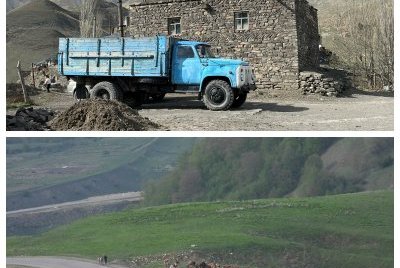
Khinalig isn’t visited much by our community – it is too remote to feature on a first itinerary of Azerbaijan. A direct drive from Baku takes 4 hours; so it should be in our Remote Cultural WHS connection. I got there via a day tour from Baku by Azerbaijan Travel Company (booked via the cheaper GetYourGuide). They run daily group tours with an English-speaking guide, which are surprisingly popular. It included some other short stops as well (Candycane Mountain and the Red Village (the town of the Mountain Jews, where the synagogue now has been closed and is guarded by Azeri soldiers because of Gaza tensions)), but when you go on your own I’d recommend doing Khinalig only as it is by far the most interesting part.
The name of the village and its people isn’t pronounced “Khee-nah-leek” as I had always thought, it is something like “Geh-nuh-leg” (the g as in the guttural Arabic/Dutch g). Despite the town of Khinalig being the obvious focus of the WHS, the core zone is much larger as it also includes both their winter and summer pastures, plus the narrow way between them which is over 200km! I tried to follow on the map whether the access road is part of that zone, but it isn’t: it meanders southeastward through an area with only minor roads. We still saw plenty of sheep and cows being moved around though.
Although there is a paved road nowadays all the way to the village, …
Keep reading 0 comments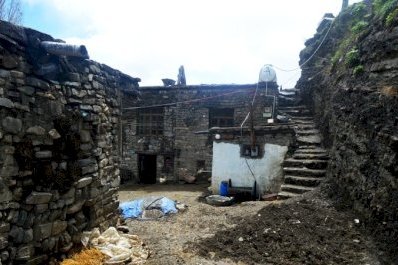
I visited Khinalig (Xinaliq, Khynalyg, Hinalug etc, the spelling is even more incoherent than in other cases in Azerbaijan) in April 2022, some months before it reappeared on the list as a highly potential contestant for WHC 2023/24. Though it's not too difficult to visit now, I'm not surprised that I became the first reviewer. Tourists in Azerbaijan seldom leave Baku and the closest surroundings - the Apsheron peninsula and Gobustan. Frankly saying - for good. The attractions the country can offer are generally low key, and the road network has serious deficiencies - all roads are radial, so if you want to drive from one region to another you most probably have to go through Baku, which makes short journeys incredibly long, and country roads sometimes are of terrible quality.
Khinaliq in this sense had a bad reputation, the road through the ravine to the mountains was horrible some years ago. However it has been improved, tarred so now it's doable with a saloon car - we drove a Hyundae minivan, and had no difficulties getting there and away. The way through the ravine is undoubtedly scenic, we stopped several times to catch the best lights. So are the mountains and valleys surrounding the village. We saw flocks of sheep and shepherds, whether they were actually transhuming that time, I don't know. Transhumance is one of the most elusive types of World Heritage anyway. There is not much built heritage to see, and even it is scattered, and …
Keep reading 0 comments
